The use of wood in construction allowed the raising and support of coverings in the form of rooves, to shelter and protect a building’s inhabitants from the inclemencies of the weather. Most of their framework remained hidden, embedded in the walls, though some parts were left visible and in their natural wooden state – ‘en blanco’ in Spanish, meaning that they had no finish of painting or gilding. From this derives the term ‘carpintería de lo blanco’, which is used in Spain to describe ceilings made mostly from pine, a wood that when newly worked had a very light tonality.
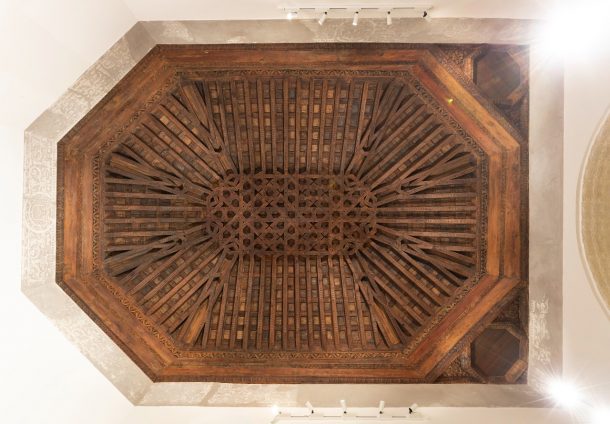
However, such ceilings can also be painted, partially or totally, performing a double role, both functional and decorative. The use of colour is quite common in wooden ceilings, especially those produced in the medieval period and throughout the 16th century. Gilded and painted ceilings were usually found in the most lavish edifices, and especially in their grandest rooms. Not all the ceilings of a building were decorated, since polychromy and gilding could be more expensive than the wood used to construct these impressive ceilings.
We call it ‘painting’ when colourful compositions cover the most visible parts of the beams, corbels or panels – these are the elements that, due to their shape, offer large flat areas that can be adorned with vegetal, heraldic or figurative elements (seen in the examples from Teruel and Silos, illustrated below). The term ‘polychromy’ is used when painting appears in combination with gilding, and transitions from something narrative and picturesque to have a markedly ornamental role, repeating the same motifs across the entire structure.
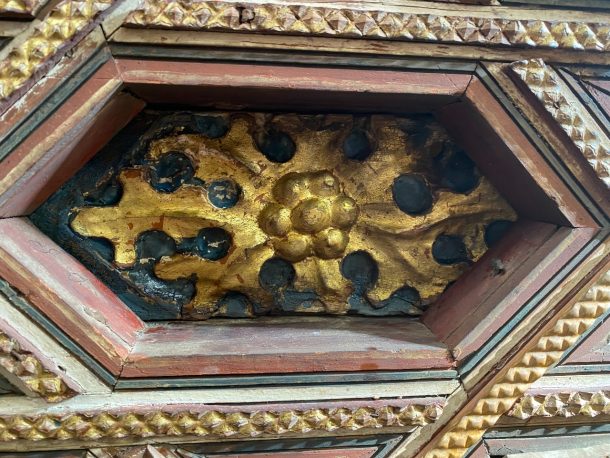
Painting, gilding and polychromy were an integral part of the creative process of these ceilings and were planned from the very moment construction started. The research that we have carried out over the last few decades confirms that this was the usual construction process. It is also important to bear in mind that gilding and painting were normally carried out in the workshop, before the ceiling was mounted and installed in its final position above the walls. The process is clearly illustrated by scenes painted onto the ceilings of Teruel Cathedral and the cloister of the Monastery of Santo Domingo in Silos, visualising the ceilings’ own creation.
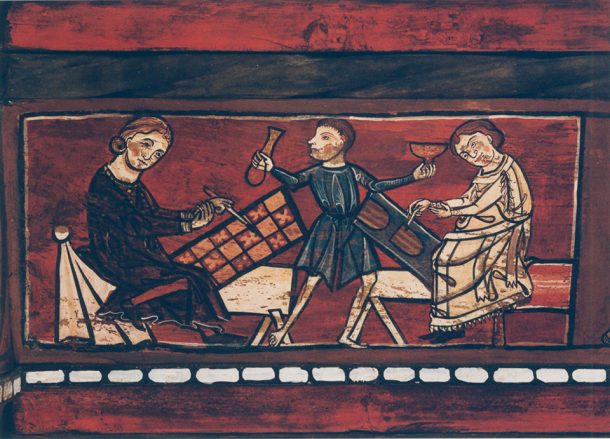
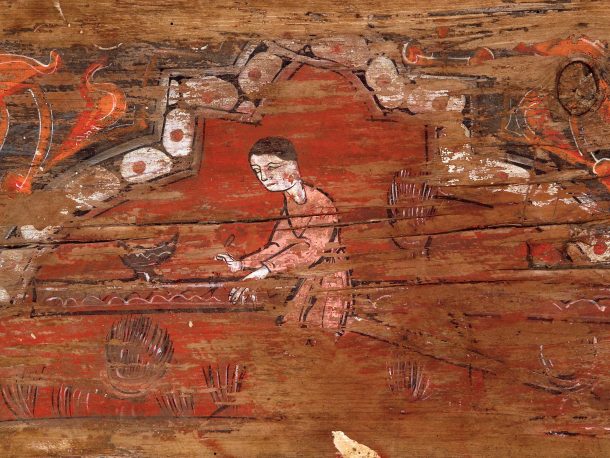
The Torrijos ceiling today housed at the V&A is completely ‘polychrome’, and its design plays with the aesthetics and symbolism of gold. Fine gold leaf – made from pure gold – covers the basketweave panels around the base of the ceiling and the vegetal decoration of the squinches, creating a strong contrast with the deep blue pigment used in the background. The blue is probably a mineral pigment, such as azurite. The golden spiky plants of the coffers stand out against the interlaced geometric ornaments that cover the largest panels of the octagon, where matte colours also interplay with shiny golden features.
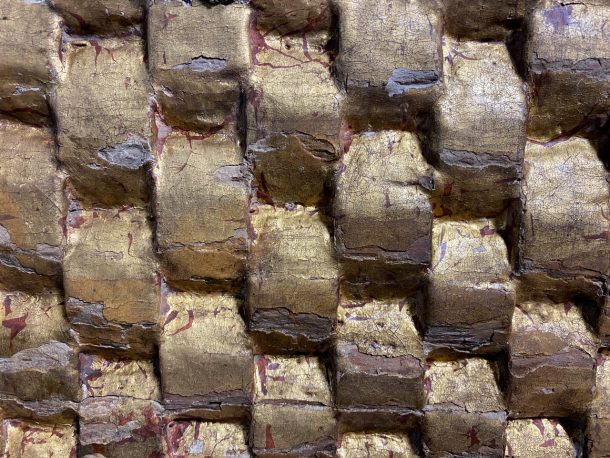
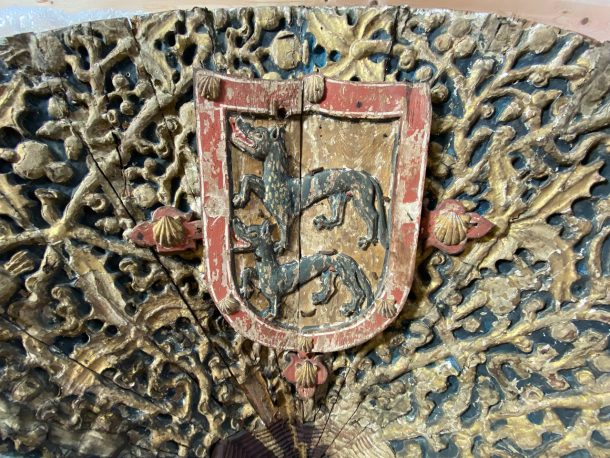
In medieval ceilings, the painting technique employed egg tempera, but from the 14th century, artists started to use oil. Both techniques coexisted in the following periods, though egg tempera was used most frequently alongside gilded decoration. Our investigations have shown that on medieval ceilings, large amounts of silver leaf and tin leaf were used, because in this early period gold leaf was only used to cover small sections; sometimes it was not used at all, as the 13th-century ceiling of Teruel Cathedral clearly shows. Its silver stars, balls and panels were painted with red lacquer, a translucid material that gives silver its peculiar shine while also acting as a protective agent of the metal, preventing it from tarnishing.
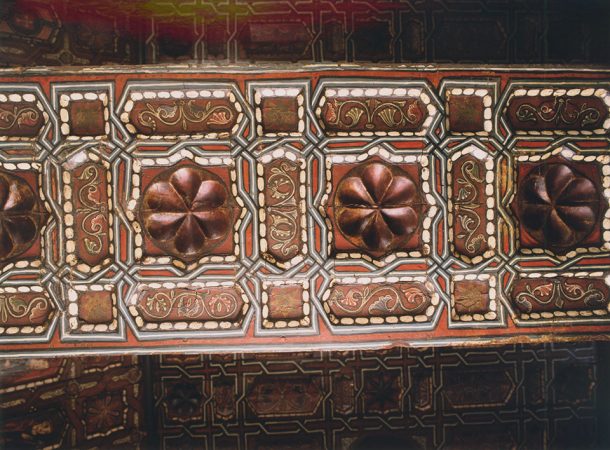
Over time, gold leaf came to be used more frequently, due to both its material stability and its symbolic value at signifying great wealth (light, power, nobility etc). Little by little, tin and silver were abandoned; some wooden ceilings came to be completely covered with gold, especially those with designs of geometric interlacing, or those with a hemispherical domed form, like that in the Museo Arqueológico Nacional in Madrid.
The preparation processes of the various elements of a wooden ceiling give us a glimpse of the peculiarities of the painting techniques used for these works. It was usual to apply a preparatory layer of plaster as a primer before a piece was painted, but this depended on the size of each piece and the decorative finish that it would be given. For example, the lateral sides of small beams, known as jaldetas or correas in Spanish, were for centuries painted a plain red colour – frequently made from vermillion – and this was always applied directly to the wood, without a plaster priming layer. As for the characteristic white colour of the saetinos (a rectilinear piece that closes the borders of the coffers), this is not strictly a paint but the plaster priming layer itself, on to which the artists painted the outline of dots, pearls, flowers, and other simple designs, in a black or red colour. This is seen in the decoration of the former Convent of Santa Fe, from the end of the 15th century (below). These plaster layers always appeared on the gilded and plated pieces which were to be burnished.
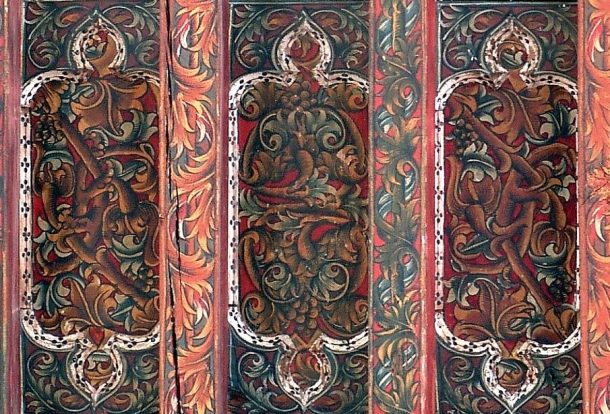
Studying these technical peculiarities helps us to better understand the painting techniques that were used to decorate wooden ceilings. Materials, processes and technical resources allow us to understand their systems of production, and the organisation and participation of the master craftsmen and artisans within the workshop, all of which is of great importance when we come to approach the conservation and restoration of these ceilings. The conservation study that has recently been carried out on the V&A’s Torrijos ceiling (and which will be the subject of a future blog post) is the perfect opportunity to deepen our knowledge of these ceilings, understand how they were constructed, and investigate their material history.
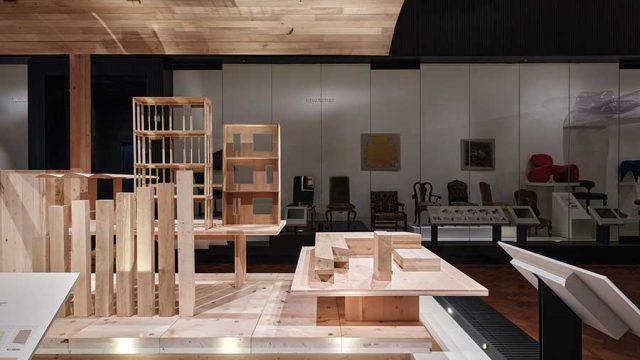

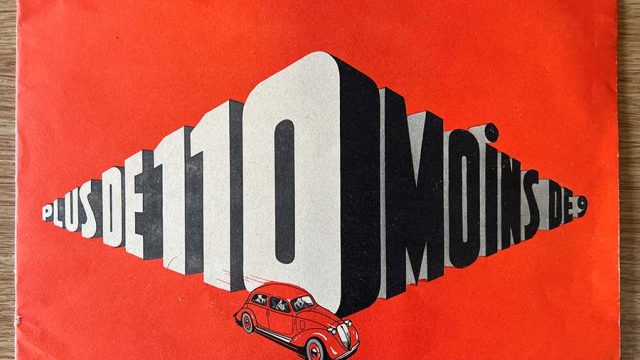
Lovely. It is nice to see how in other countries painted ceilings are presented, and what kind of ceilings are they. I just visited yesterday a church in a hidden Hungarian village in Tancs ( Tonciu, Mures)in Romania, where the painted ceiling is from 1676. Unfortunately not many tourists knows about it. It has a lot of figurative drawings, funny ones too. Thanks for the article.
Was there a base/undercoat applied to the wood before painting on the colours?
Asking as I have some wood that i want to paint in a edieval style. I use egg tempera.